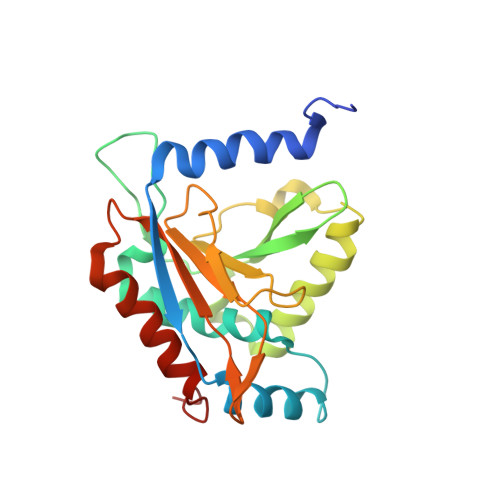The catalytic core of an archaeal 2-oxoacid dehydrogenase multienzyme complex is a 42-mer protein assembly.
Marrott, N.L., Marshall, J.J., Svergun, D.I., Crennell, S.J., Hough, D.W., Danson, M.J., van den Elsen, J.M.(2012) FEBS J 279: 713-723
- PubMed: 22188654
- DOI: https://doi.org/10.1111/j.1742-4658.2011.08461.x
- Primary Citation of Related Structures:
3RQC - PubMed Abstract:
The dihydrolipoyl acyl-transferase (E2) enzyme forms the structural and catalytic core of the tripartite 2-oxoacid dehydrogenase multienzyme complexes of the central metabolic pathways. Although this family of multienzyme complexes shares a common architecture, their E2 cores form homo-trimers that, depending on the source, further associate into either octahedral (24-mer) or icosahedral (60-mer) assemblies, as predicted by the principles of quasi-equivalence. In the crystal structure of the E2 core from Thermoplasma acidophilum, a thermophilic archaeon, the homo-trimers assemble into a unique 42-mer oblate spheroid. Analytical equilibrium centrifugation and small-angle X-ray scattering analyses confirm that this catalytically active 1.08 MDa assembly exists as a single species in solution, forming a hollow spheroid with a maximum diameter of 220 Å. In this paper we show that a monodisperse macromolecular assembly, built from identical subunits in non-identical environments, forms an irregular protein shell via non-equivalent interactions. This unusually irregular protein shell, combining cubic and dodecahedral geometrical elements, expands on the concept of quasi-equivalence as a basis for understanding macromolecular assemblies by showing that cubic point group symmetry is not a physical requirement in multienzyme assembly. These results extend our basic knowledge of protein assembly and greatly expand the number of possibilities to manipulate self-assembling biological complexes to be utilized in innovative nanotechnology applications.
Organizational Affiliation:
Department of Biology and Biochemistry, Centre for Extremophile Research, University of Bath, UK.














